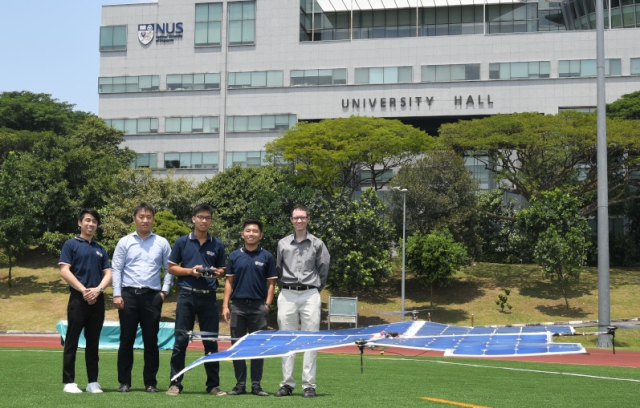The size question is critical, as there are four basic approaches to electrifying aircraft propulsion. An all-electric system using batteries or fuel cells for energy storage is suited only to small, short-range aircraft at foreseeable levels of technology. Serial or parallel hybrid-electric power using an internal-combustion or turbine engine looks viable for regional aircraft. Turboelectric propulsion using jet fuel for energy storage looks to be the only feasible approach for large commercial aircraft.
Uber wants all-electric propulsion for its eVTOL urban air taxis to minimize noise, emissions and infrastructure requirements. But the low energy density of lithium-ion batteries compared with aviation fuel limits range, even with expected improvements. A four-passenger eVTOL could fly about 50 km (30 mi.) on today’s batteries, and by 2025 fly 90-100 km based on projected improvements, says Yutko.
“If you take today’s battery energy density of 150-200 Wh/kg at the pack level and ramp that up at 8% a year, it’s still not a viable path for large-scale aircraft for the foreseeable future,” says Simpson. “That doesn’t mean it doesn’t have a place on those aircraft, or that it doesn’t have a place on small-scale and short-range aircraft. We do view that as a path worth pursuing going forward.”
New, more energy-dense battery chemistries are being commercialized, but initially they will be expensive and have limited lives in an urban-eVTOL duty cycle that demands high charging and discharging rates. Electric aircraft for longer-range suburban and regional services will have to be hybrid at first, but hybridization adds the complexity and weight of motors, generators, batteries, electronics and wiring.
“You get a pretty severe degradation in mission performance as you electrify,” says Yutko. Analyses suggest reduced-capability hybrids can have lower energy costs than traditional aircraft, though. “There is some potential on certain missions to beat conventionally powered aircraft on an energy-only cost basis,” he says. “If you believe there is a market in 500 mi. and below, then you are talking about something interesting.”
In serial hybrid propulsion, the engine drives a generator to produce electricity and charges the battery that powers the motor and propulsor. In parallel hybrid propulsion, the propulsor is driven by either or both the engine and the battery. A serial architecture enables distributed electric propulsion, in which propulsors are distributed around the airframe to improve aerodynamics and increase redundancy. “Hybrid-electric is not one solution. It fundamentally depends on aircraft configuration,” says Thomas.
GE’s early studies have focused on the narrowbody airliner market, because of its large established market share with CFM56 and Leap 1 engines produced jointly with Safran. “We understand the technologies that are needed, and some of them are very challenging,” says Simpson.
One promising configuration studied by GE as well as NASA and the other engine manufacturers takes electrical power from the underwing engines and distributes it to a fan mounted in the aft fuselage. The fan ingests and reenergizes the slow-moving boundary layer over the fuselage, filling in the aircraft’s wake and reducing drag and fuel burn.
“This is a relatively simple version of a distributed propulsion system,” says Simpson. But he cautions: “This is not child’s play. This is significant amounts of power, megawatt-class from each engine, distributed through the airframe, likely at higher voltages than we are used to.” Distribution voltages in the kilovolt range will be needed to minimize cable weight, requiring solutions to arcing issues at high altitude.
Initial studies of the concept by NASA, which calls it STARC-ABL (for Single-aisle Turboelectric Aircraft with Aft Boundary Layer Propulsor), indicated block fuel-burn reductions of around 10%. But another, higher-fidelity look at the configuration, correcting a mistake in the original analysis and updating the technology assumptions, has reduced the saving to a less promising 3.5%. The revised result has been confirmed by an external audit of STARC-ABL conducted by Aurora, says Yutko.
The result underlines how hard it is for electric propulsion to show a benefit with foreseeable technology, particularly in large aircraft. “We didn’t expect a benefit from partial turboelectric, so we were excited when we saw 10%. We would have been excited with 3%,” says Cheryl Bowman, technical co-lead for NASA’s hybrid gas-electric project.
STARC-ABL is aimed at a 2035 entry into service, and the revisit included an increase in the performance projected for advanced turbofans expected to be available in that time frame. “The better the turbofan, the longer it takes hybrid-electric to show a benefit,” says Bowman.
That is a key reason why electric propulsion looks less attractive on large aircraft, with their 55%-efficient high-bypass turbofans, than it does on regional aircraft with 30%-efficient gas turbines—a difference that is a result of both their smaller size and the lower investment in that market sector.
Electric systems are fundamentally more efficient than turbines, but in STARC-ABL’s partially turboelectric architecture, the inefficiencies in the generator, distribution, electronics and motor stack up to erode the aerodynamic benefit from boundary-layer ingestion. And those inefficiencies generate kilowatts of heat that must be used, driving up the weight for thermal management.
There is potential for improvements in component efficiencies and in optimization of the thruster, but the agency also has one-year studies underway on two other potentially viable single-aisle concepts, says Bowman. The megawatt-class STARC-ABL propulsion system will still be tested in the NASA Electric Aircraft Testbed at Plum Brooke, Ohio. This will include running the system at simulated high altitude.
As industry eyes electrification across a range of markets, “We are going to need a range of technologies; it’s not one size fits all,” says Simpson. “We are going to have to prepare for a range of voltages, into the kilovolt range. And we are going to need altitude-ready components—motors, generators, inverters, etc. The airframe and propulsion system will be integrated as never before, and the components in that system are going to be highly integrated to achieve the power densities we need.”
While pouring cold water on claims made for the potential on large aircraft of power regeneration, noise reduction and new configurations, Winter says a parallel-hybrid approach could have value. “If I had a megawatt motor/generator on the low spool, there is no doubt I could operate the engine at its sweet spot for efficiency for more of the mission. I could reduce core temperatures and take advantage of that in either higher overall pressure ratio and thermal efficiency or lower maintenance cost,” he says.
If a second, 0.5-megawatt motor/generator is added to the high spool, “I can have an adaptive engine where I can trade power between the spools. [But] this is really pushing the edges of cyber-physical control and the systems modeling required to optimize the system,” Winter says. A megawatt of power generation from the low spool could also allow more extreme electrification of aircraft subsystems than in the Boeing 787. “We do recognize a value proposition there,” he adds.
Industry is also aware of the potential for disruption that comes with electrification. Airbus has moved aggressively into urban air mobility in part because of the risk to its helicopter business. Eliminating the need to develop a gearbox significantly lowers the barrier to entry to vertical flight. Engine-makers see the potential for disruption of their traditional worksplit with airframers as well.
New players are entering the propulsion market based on electric technology, among them Siemens and startups such as H55, MagniX and VerdeGo. On the E-Fan X, Rolls shares the propulsion system with Airbus and Siemens—a possible sign of things to come. “We have to understand what that [supply scope] impact looks like and develop a business model that continues to ensure we provide the value the market expects from us,” says Mekhiche.
| 


















